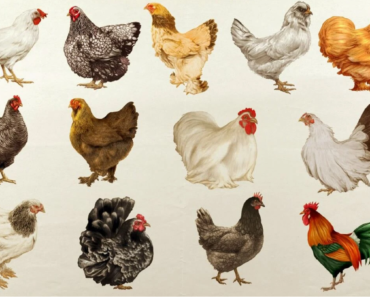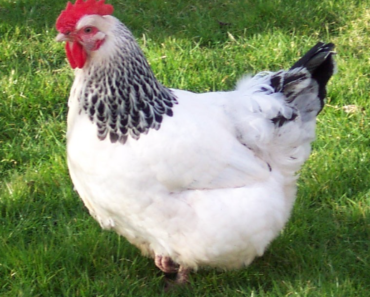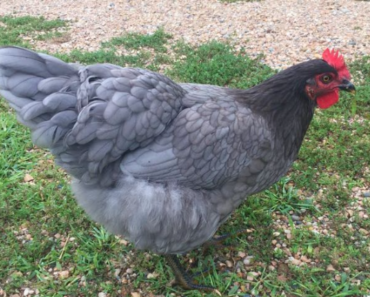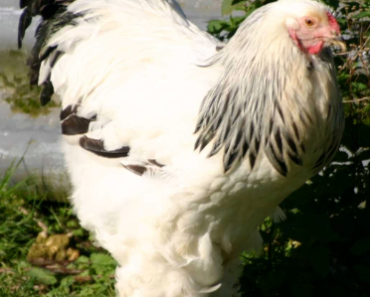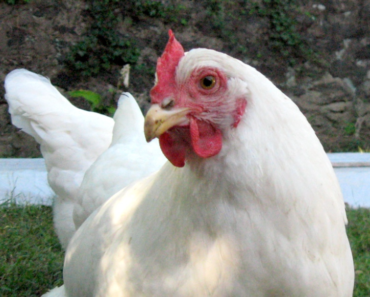Contents
- 1 The Majestic Orpington Chicken: A Luminary Breed in the World of Poultry
- 2 The History of Orpington Chicken
- 3 Distinctive Characteristics of Orpington Chicken
- 4 Popular Uses and Popularity of Orpington Chicken
- 5 FAQ
- 5.1 What are the key characteristics and traits of Orpington chickens that make them a popular breed among chicken enthusiasts?
- 5.2 How does the color variation in Orpington chickens, such as black, blue, buff, and white, impact their overall appearance and desirability in the chicken breeding community?
- 5.3 What are some tips and techniques for successfully breeding Orpington chickens to maintain their specific traits and qualities, while also ensuring genetic diversity within the flock?
- 5.4 How does the temperament of Buff Orpington chickens differ from other chicken breeds, and what impact does it have on their suitability for backyard flocks?
- 5.5 What are some recommended tips and strategies for successfully raising Buff Orpington chickens in terms of nutrition, housing, and overall care?
- 5.6 Related Posts

We delve into the Orpington chicken, a true gem in the poultry world. Known for its stunning appearance and excellent egg-laying capabilities, the Orpington offers both beauty and practicality to chicken enthusiasts. Join us as we uncover the fascinating history, distinctive characteristics, and caring tips for these remarkable birds. Get ready to be captivated by the allure of the Orpington!
The Majestic Orpington Chicken: A Luminary Breed in the World of Poultry
The Majestic Orpington Chicken is truly a luminary breed in the world of poultry. Its striking appearance and unique characteristics have made it a favorite among chicken enthusiasts worldwide.
Originating in England in the late 1800s, the Orpington chicken quickly gained popularity for its large size and beautiful plumage. With its rounded body, fluffy feathers, and bold colors, it stands out in any flock.
One of the most remarkable qualities of the Orpington is its friendly and docile disposition. Unlike some other breeds that can be skittish or aggressive, Orpington chickens are known for their gentle nature. This makes them ideal for families and individuals looking for a pet-like chicken that can be easily handled.
In addition to their charming personality, Orpingtons are also excellent layers. These hens produce large brown eggs consistently throughout the year. Whether for personal consumption or sale, their consistent egg production is a desirable trait for many chicken keepers.
Furthermore, the Orpington’s meat is highly regarded for its tender texture and rich flavor. The breed is known for its plumpness and juiciness, making it a popular choice for those looking to raise chickens for meat.
With their many positive attributes, it’s no wonder why Orpington chickens are often referred to as the royalty of the poultry world. Their beauty, friendly temperament, and productivity truly set them apart from other chicken breeds.
If you’re looking for an extraordinary chicken breed that combines beauty, friendliness, and productivity, the Orpington chicken is an excellent choice. Its regal presence and exceptional qualities make it a true luminary in the world of poultry.
The History of Orpington Chicken
Orpington chicken is a breed that originated in the town of Orpington, Kent, England, in the late 1800s. William Cook is credited with developing this breed by crossing several existing breeds like Minorcas, Plymouth Rocks, and Langshans. Its main purpose was to create a dual-purpose chicken with exceptional meat quality and good egg-laying capabilities.
Distinctive Characteristics of Orpington Chicken
Orpington chickens are known for their large size, rounded shape, and soft feathers that come in various colors such as black, blue, buff, and white. They have a friendly and docile temperament, making them ideal for backyard enthusiasts and families with children. Additionally, their round bodies make them look plump and cuddly.
Popular Uses and Popularity of Orpington Chicken
Orpington chickens are primarily kept for dual-purpose, as they are valued both for their meat and eggs. Their meat is known for its flavor and tenderness, making it a favorite among poultry enthusiasts. Moreover, Orpington hens are good layers, producing approximately 175-200 brown eggs per year.
The popularity of Orpington chickens has grown steadily over the years due to their appealing characteristics. They have become sought-after by breeders, exhibition enthusiasts, and backyard keepers alike.
Remember to include appropriate images and references throughout the article to enhance the content and credibility.
FAQ
What are the key characteristics and traits of Orpington chickens that make them a popular breed among chicken enthusiasts?
Orpington chickens are a popular breed among chicken enthusiasts due to their key characteristics and traits that set them apart from other breeds. Here are some of the reasons why they are highly regarded:
1. Friendly and gentle: Orpingtons are known for their docile and friendly nature, making them an excellent choice for families and children. They are generally calm birds that are easy to handle and enjoy human interaction.
2. Cold-hardy: One of the standout traits of Orpingtons is their ability to withstand colder climates. Their dense plumage, coupled with a layer of fat beneath the feathers, provides them with excellent insulation, allowing them to thrive in chilly environments.
3. Good egg-layers: Orpingtons are reliable layers, often producing large brown eggs. While they may not be the most prolific layers compared to some other breeds, their consistent egg production makes them valuable for small-scale farming or backyard chicken keeping.
4. Dual-purpose breed: Orpingtons are considered a dual-purpose breed, meaning they are suitable for both meat and egg production. Their plump bodies and well-rounded musculature make them a decent choice for those interested in raising chickens for meat.
5. Beautiful appearance: Orpingtons have a stunning appearance thanks to their soft and fluffy feathers. They come in various colors, including black, blue, buff, and white, and their plume-like feathering gives them an elegant and regal look.
6. Broody tendencies: Orpingtons have a propensity for going broody, meaning they are inclined to sit on and hatch eggs. This can be advantageous for individuals interested in natural incubation or raising chicks without the need for artificial incubation equipment.
Orpington chickens are popular among chicken enthusiasts due to their friendly demeanor, cold-hardiness, good egg-laying abilities, dual-purpose characteristics, beautiful appearance, and broody tendencies. These factors contribute to their appeal and make them a sought-after breed in the chicken-keeping community.
How does the color variation in Orpington chickens, such as black, blue, buff, and white, impact their overall appearance and desirability in the chicken breeding community?
The color variation in Orpington chickens, including black, blue, buff, and white, greatly impacts their overall appearance and desirability in the chicken breeding community. Each color variation has its own unique characteristics that attract different breeders and enthusiasts.
Black Orpingtons are the most common and traditional color variation, known for their striking jet-black feathers. They have a classic and elegant appearance that appeals to many breeders. Black Orpingtons are highly sought after for their regal demeanor and versatility in various settings.
Blue Orpingtons have a more subdued appearance compared to black. Their feathers possess a lovely blue-gray hue, which can range from a light sky blue to a deeper slate-blue shade. This color variation is considered quite rare and is highly desired among enthusiasts who enjoy the uniqueness they bring to their flocks.
Buff Orpingtons are known for their soft, golden-buff feathers. They have a warm and inviting appearance, often described as having a teddy bear-like quality. Buff Orpingtons are highly popular due to their gentle nature and attractive coloring, making them a favorite choice for backyard chicken keepers.
White Orpingtons are prized for their pure white feathers, which create a stunning contrast with their red combs and wattles. Their snowy appearance gives them an air of elegance and grace. White Orpingtons are highly valued for their beauty and are often seen in exhibition competitions.
Overall, the appearance and desirability of each color variation primarily depend on personal preferences and the purpose of breeding. While some may prefer the classic black or the unique blue variation, others may lean towards the warm and cuddly buff or the pristine white Orpingtons. Nonetheless, regardless of the color, Orpington chickens are consistently sought after for their friendly temperament, good egg-laying abilities, and attractive appearance.
What are some tips and techniques for successfully breeding Orpington chickens to maintain their specific traits and qualities, while also ensuring genetic diversity within the flock?
Breeding Orpington chickens while maintaining their specific traits and qualities, along with ensuring genetic diversity within the flock, requires careful planning and implementation. Here are some tips and techniques:
1. Selection of Breeding Stock: Choose Orpington chickens that possess the desired traits, such as feather color, body conformation, temperament, and egg-laying abilities. Look for birds that meet or exceed breed standards.
2. Maintain a Variety of Bloodlines: To prevent inbreeding and maintain genetic diversity, it is important to have multiple bloodlines within your breeding flock. Introduce new blood periodically by purchasing birds from reputable breeders or participating in poultry shows and exhibitions.
3. Keep Detailed Records: Maintain comprehensive records of your breeding program, including parentage, phenotypic and genotypic characteristics, and breeding outcomes. This information will help you track the progress and genetic diversity of your flock.
4. Practice Selective Breeding: Use selective breeding techniques to reinforce desirable traits and reduce any undesirable ones. This involves choosing the best individuals from each generation and breeding them together. Take into account not only physical traits but also factors like health, vigor, and reproductive performance.
5. Rotate Breeding Males: To avoid overusing a single male and prevent inbreeding, rotate the males within the flock. This ensures that each male has an opportunity to contribute to the gene pool while maintaining genetic diversity.
6. Conduct Regular Health Checks: Regularly assess the health and vigor of your breeding stock. Remove any birds that display signs of disease, deformities, or poor reproductive performance. This helps maintain the overall quality and genetic health of the flock.
7. Seek Professional Advice: Consult with experienced Orpington breeders or poultry geneticists to gain insights into specific breeding strategies for maintaining desirable traits and ensuring genetic diversity. They can provide guidance on the selection of breeding pairs and offer advice tailored to your specific goals.
Remember, maintaining genetic diversity is crucial for the long-term health and vitality of any poultry flock. By implementing these tips and techniques, you can successfully breed Orpington chickens while preserving their unique qualities and sustaining genetic diversity.
The Orpington chicken is undeniably a remarkable breed that has garnered immense popularity among chicken enthusiasts around the world. Its striking appearance, gentle temperament, and excellent meat qualities make it a top choice for both backyard hobbyists and professional chicken farmers alike.
With its large size, fluffy feathers, and beautiful colors, the Orpington chicken adds an aesthetic appeal to any flock. Additionally, its calm and friendly nature makes it a favorite among families with children or individuals seeking a docile pet chicken.
Furthermore, the Orpington is highly valued for its excellent meat quality. The breed’s relatively slow growth rate allows its meat to develop a rich flavor and tenderness that is favored by many. Whether used for home cooking or in gourmet restaurants, the Orpington’s succulent meat is sure to satisfy even the most discerning palates.
How does the temperament of Buff Orpington chickens differ from other chicken breeds, and what impact does it have on their suitability for backyard flocks?
The temperament of Buff Orpington chickens differs from other chicken breeds in that they are known for being exceptionally friendly and gentle. They are often described as docile, calm, and even-tempered. Buff Orpingtons are known to be very sociable and enjoy human interaction, making them a popular choice for backyard flocks.
Their friendly temperament makes them suitable for families with children or people who want a breed that is easy to handle. Buff Orpingtons are known to be quite tolerant and forgiving, which can be beneficial for those new to raising chickens.
Their calm nature also makes them less prone to stress or aggression, which can be valuable when integrating them with other chicken breeds or keeping them in confined spaces. The peaceful disposition of Buff Orpingtons also means they are less likely to become flighty or prone to wandering off, making them good candidates for free-ranging in a backyard setting.
the friendly and calm temperament of Buff Orpington chickens makes them highly suitable for backyard flocks. Their gentle nature and sociable attitude make them an excellent choice for families and individuals looking for a pleasant and easygoing chicken breed.
What are some recommended tips and strategies for successfully raising Buff Orpington chickens in terms of nutrition, housing, and overall care?
Nutrition:
1. Provide a balanced diet consisting of high-quality commercial chicken feed specifically formulated for laying hens. Look for feeds that contain around 16-18% protein.
2. Supplement their diet with fresh fruits, vegetables, and kitchen scraps to provide variety and additional nutrients.
3. Ensure a constant supply of clean, fresh water for hydration.
Housing:
1. Provide a spacious and secure coop to protect Buff Orpington chickens from predators and the elements. Allow a minimum of 4 square feet of space per chicken inside the coop.
2. Incorporate proper ventilation to prevent respiratory issues and moisture buildup.
3. Include nesting boxes filled with clean bedding material such as straw or wood shavings for egg-laying.
Overall Care:
1. Conduct regular health checks to monitor the well-being of your Buff Orpingtons. Look for signs of illness, parasites, or injury.
2. Keep the coop clean by regularly removing droppings and refreshing bedding to maintain a hygienic environment.
3. Provide opportunities for exercise by allowing access to a spacious outdoor run or free-ranging under supervision.
4. Familiarize yourself with common chicken illnesses and consult a veterinarian if necessary for proper treatment.
Remember, Buff Orpingtons are known for their friendly and docile nature, so provide plenty of social interaction to keep them happy and content.
The Orpington chicken stands as a testament to the diverse and fascinating world of chicken breeds. Whether sought after for their ornamental value, affectionate personalities, or delectable meat, these birds continue to capture the hearts and taste buds of poultry enthusiasts worldwide.

